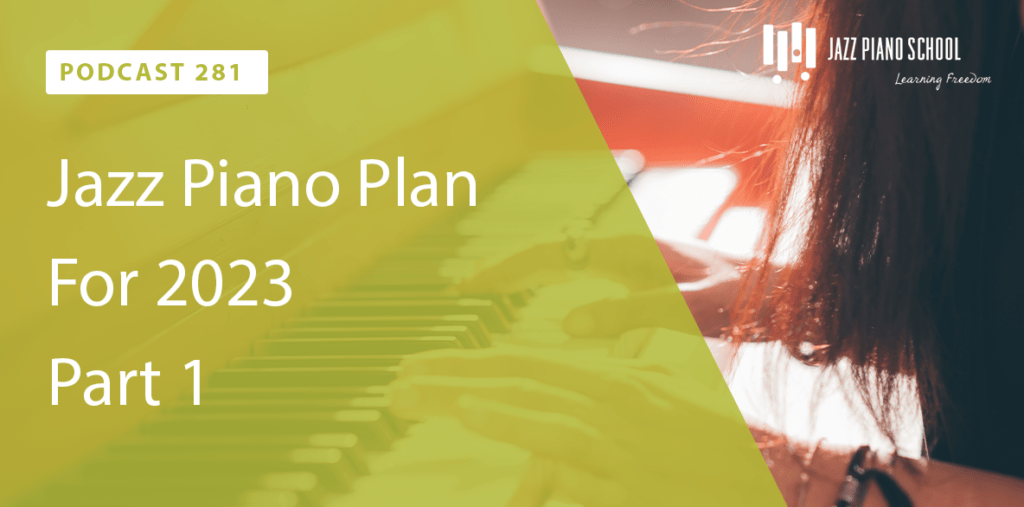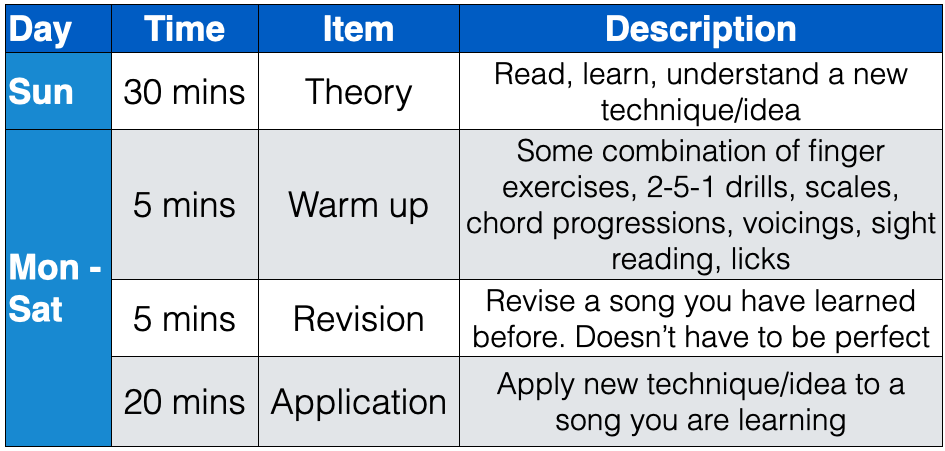Are you passionate about jazz piano and eager to enhance your skills? A structured learning plan can make all the difference.
In this blog post, we introduce the Jazz Piano Learning Plan to help you progress effectively. Learning jazz piano can be both exciting and challenging. The key to success lies in a systematic approach that balances theory with practical exercises. Whether you’re a beginner or an advanced player, a well-structured plan ensures steady improvement. The Jazz Piano Step-by-Step Course offers just that. With high-quality content, progressive lessons, and expert guidance, this course helps you build confidence and proficiency. Get started with a free 14-day trial to experience the benefits of structured learning. For more details, check out the course here.

Introduction To Jazz Piano
Jazz piano offers a unique and engaging musical journey. Learning jazz piano requires understanding its distinctive elements and benefits. This section provides an introduction to the fascinating world of jazz piano.
What Makes Jazz Piano Unique?
Jazz piano stands out due to its improvisational nature and complex harmonies. Pianists often create music on the fly, blending melodies and chords seamlessly. This style demands a strong grasp of music theory and creative expression.
Another unique aspect is the use of syncopation. This involves placing emphasis on unexpected beats, creating a rhythmic drive. Jazz pianists also utilize extended chords and altered scales to add depth and color to their music.
The Benefits Of Learning Jazz Piano
Learning jazz piano offers several benefits. It enhances musical creativity and improves improvisational skills. This genre encourages thinking outside the box and experimenting with new sounds.
Additionally, jazz piano boosts technical proficiency. The complex chords and rhythms challenge the fingers and mind, leading to better overall piano skills. Consistent practice in jazz can improve speed, accuracy, and coordination.
Moreover, jazz piano connects theoretical knowledge with practical application. Students learn to apply scales, modes, and chord progressions in real-time, deepening their understanding of music.
Jazz Piano Learning Plan
| Feature | Description |
|---|---|
| Structured Lessons | Step-by-step approach with progressive unlocking every 7 or 9 days |
| High-Quality Content | Organized materials and masterful teaching by Gjermund |
| Practice Logs | Guidance on how to practice effectively |
| Free Trial | 14-day free trial to explore the course risk-free |
Enroll in the Jazz Piano Step-by-Step Course today to start your jazz piano journey. Enjoy structured lessons, high-quality content, and continuous progress.
Setting The Foundation
Learning jazz piano requires a strong foundation. This section will guide you through the basics. We will focus on understanding basic music theory and essential jazz chords and scales. Let’s start building your jazz piano skills step-by-step.
Understanding Basic Music Theory
Understanding basic music theory is crucial for jazz piano. It helps you read music, understand structures, and play with confidence. Here are key concepts to focus on:
- Notes and Intervals: Learn the 12 notes in Western music. Understand how intervals (distance between notes) work.
- Scales: Start with major and minor scales. Practice playing them in different keys.
- Chords: Learn how chords are built. Focus on triads (three-note chords) and seventh chords (four-note chords).
- Rhythm: Understand basic rhythms and time signatures. Practice clapping and counting out loud.
Essential Jazz Chords And Scales
Jazz piano often uses specific chords and scales. These are essential for improvisation and creating the jazz sound. Focus on these elements:
| Chord Type | Examples |
|---|---|
| Major Seventh Chords | Cmaj7, Fmaj7, Gmaj7 |
| Minor Seventh Chords | Am7, Dm7, Em7 |
| Dominant Seventh Chords | G7, C7, F7 |
Scales to practice:
- Major Scale: The foundation for many other scales.
- Minor Scale: Essential for creating a different mood.
- Blues Scale: Adds a characteristic sound to your playing.
- Jazz Minor Scale: Important for advanced jazz improvisation.
By understanding these basic music theory concepts and essential jazz chords and scales, you will set a solid foundation for your jazz piano journey. Keep practicing regularly to see steady progress.
For a structured learning plan, try the Jazz Piano Step-by-Step Course. It offers high-quality lessons, practice logs, and a didactical approach that ensures steady progress. Start your 14-day free trial today and take the first step in your jazz piano journey!
Developing Your Technique
Developing your technique is essential for progressing in jazz piano. The Jazz Piano Step-by-Step Course offers structured lessons to enhance your skills. Below, we explore finger exercises and hand coordination tips to improve your playing.
Finger Exercises For Dexterity
Finger exercises are crucial for building dexterity. They help in strengthening your fingers and improving speed.
Here are some exercises to include in your practice:
- Scales and Arpeggios: Practice scales and arpeggios in different keys daily. This improves finger strength and agility.
- Hanons Exercises: These classical exercises are excellent for finger independence and control.
- Chromatic Runs: Play chromatic scales starting from different notes. This enhances finger precision.
Improving Hand Coordination
Hand coordination is vital for playing jazz piano. You need to synchronize both hands for a smooth performance.
Consider these tips to enhance coordination:
- Separate Hands Practice: Practice each hand separately before combining them. This helps in understanding the parts better.
- Rhythmic Exercises: Play rhythms with each hand. Start with simple patterns and gradually move to complex ones.
- Slow Practice: Play pieces slowly, ensuring both hands are in sync. Speed up only when you achieve accuracy.
Incorporate these exercises and tips into your routine. They will significantly enhance your piano technique. The Jazz Piano Step-by-Step Course provides more such valuable insights. Start your free 14-day trial here.

Learning Jazz Standards
Learning jazz standards is essential for any aspiring jazz pianist. These pieces form the foundation of jazz music and help develop improvisation skills. This section explores some key standards for beginners and analyzes song structures to enhance understanding and performance.
Top Jazz Pieces For Beginners
Starting with the right pieces can make learning jazz more enjoyable. Here are some recommended standards:
- Autumn Leaves: This classic piece is great for beginners. It has a simple chord progression and a memorable melody.
- Blue Bossa: A bossa nova tune with an easy-to-follow structure. It blends jazz harmony with a Latin rhythm.
- So What: A modal jazz piece by Miles Davis. It focuses on improvisation over a simple, repetitive form.
- All of Me: A popular standard with a straightforward AABA structure. It is ideal for practicing chord changes.
- Summertime: This slow ballad helps beginners focus on phrasing and dynamics. It is a staple in jazz repertoire.
Analyzing Song Structure
Understanding the structure of jazz standards is crucial for effective practice and performance. Most jazz pieces follow common forms like AABA or ABAC. Here is a brief analysis of two examples:
| Song | Form | Details |
|---|---|---|
| Autumn Leaves | AABC | The A sections feature a descending chord progression. The B section provides a contrasting bridge. |
| All of Me | AABA | Each A section has the same melody, while the B section introduces a new theme. |
Breaking down song structures helps in memorizing pieces and improvising over them. Practice each section separately. Then, combine them to play the entire piece smoothly.
Practice Tip: Use practice logs to track your progress. Focus on one piece at a time and gradually add more as you become comfortable.
By learning these top jazz pieces and analyzing their structures, beginners can build a solid foundation in jazz piano. This structured approach ensures steady progress and enhances overall musicianship.
Improvisation Skills
Learning jazz piano requires a solid understanding of improvisation skills. Improvisation is a key element in jazz, allowing musicians to express their creativity and unique style. This section will cover the basics of jazz improvisation and how to practice with backing tracks to enhance your skills.
Basics Of Jazz Improvisation
Improvisation involves creating music spontaneously. In jazz, this means using scales, chords, and rhythms to craft melodies on the fly. Start by learning the basic scales like the major, minor, and blues scales. Practice these scales until you are comfortable playing them in various keys.
Next, familiarize yourself with chord progressions. Common progressions like the ii-V-I are fundamental in jazz. Play these progressions repeatedly to understand how chords connect and how you can move between them smoothly.
Listening is crucial. Listen to jazz recordings and pay attention to how musicians improvise. Notice their phrasing, note choices, and how they interact with the rhythm section. Try to mimic their style and incorporate these elements into your playing.
Practicing With Backing Tracks
Practicing with backing tracks is a great way to develop your improvisation skills. Backing tracks provide a full band experience, allowing you to focus on soloing while the rhythm section keeps the groove.
Start by selecting a backing track with a simple chord progression. Play along with the track, using the scales and chord progressions you’ve learned. Experiment with different rhythms and note combinations to create interesting solos.
Record yourself while playing with backing tracks. Listening to your recordings helps identify areas for improvement. Pay attention to your timing, phrasing, and note selection. Adjust your practice based on what you hear.
Use various backing tracks to expose yourself to different styles and tempos. This will help you become a versatile player, capable of improvising in any jazz setting.
To learn more about developing your improvisation skills and other jazz piano techniques, consider enrolling in the Jazz Piano Step-by-Step Course. This course offers structured lessons, practice logs, and expert guidance to help you progress steadily and confidently.
Playing With A Band
Learning to play jazz piano alone is one thing, but playing with a band is a whole new experience. This section will guide you through the essential skills and roles you need to master.
Communication And Listening Skills
Playing in a jazz band requires strong communication and listening skills. Here are some key points to focus on:
- Active Listening: Pay attention to other musicians. Listen to their melodies, rhythms, and dynamics.
- Non-Verbal Communication: Use eye contact and body language to communicate. It helps to stay in sync.
- Understanding Cues: Learn to recognize and give musical cues. This ensures smooth transitions and improvisations.
- Feedback: Provide and receive constructive feedback. It helps improve the group’s performance.
Role Of The Jazz Pianist In A Band
In a jazz band, the pianist plays a crucial role. Understanding your role can enhance the overall sound of the band:
- Harmony: Provide harmonic support. Play chords that complement the melodies.
- Rhythm: Maintain a steady rhythm. Sync with the drummer and bassist.
- Improvisation: Contribute to solos and improvisations. Add your unique touch to the music.
- Comping: Support other soloists. Play chordal accompaniments that enhance their solos.
- Dynamics: Adjust your playing dynamics. Match the intensity and volume of the band.
Playing with a band is an integral part of the Jazz Piano Step-by-Step Course. You can find more information and start your free 14-day trial here.
Advanced Techniques
Delving into advanced jazz piano techniques can elevate your musicality. The Jazz Piano Step-by-Step Course covers a variety of methods to enhance your skills. By focusing on complex chords and advanced progressions, you can achieve a richer, more sophisticated sound.
Exploring Complex Chords
Learning complex chords is essential for advanced jazz piano. These chords add depth and color to your playing.
- Altered Dominant Chords: These chords include altered notes like flat 9, sharp 9, or sharp 5.
- Extended Chords: Adding 9ths, 11ths, and 13ths can create lush harmonies.
- Substitutions: Tritone substitutions replace dominant chords to add tension and resolution.
Practice these chords regularly. Use the structured lessons in the course to integrate them into your playing.
Mastering Advanced Jazz Progressions
Advanced progressions give your music a professional edge. The Jazz Piano Step-by-Step Course teaches how to navigate these complex sequences smoothly.
- II-V-I Progressions: These are fundamental in jazz. Practice in all keys.
- Coltrane Changes: These substitute the usual chords with a sequence of major third relationships.
- Modal Interchange: Borrow chords from parallel modes to create interesting contrasts.
Use practice logs to track your progress. Regular practice ensures you incorporate these progressions naturally into your performances.
By consistently applying these advanced techniques, you will see visible improvement. The Jazz Piano Step-by-Step Course provides the tools and guidance needed for success.

Credit: www.thejazzpianosite.com
Resources And Tools
Embarking on a jazz piano learning journey requires the right resources and tools. Access to quality materials can make a significant difference in your progress. Below, you’ll find some valuable recommendations to enhance your learning experience.
Recommended Books And Online Courses
Books and online courses are essential for a structured learning approach. Here are some highly recommended resources:
| Resource | Description |
|---|---|
| The Jazz Piano Step-by-Step Course | An online course designed for all levels. It offers structured, step-by-step lessons to improve piano skills. With a free 14-day trial, you can explore and see the benefits. |
| Jazz Piano Book by Mark Levine | A comprehensive guide covering various jazz piano techniques and theory. |
| Play Piano by Ear by Simon Schott | Focuses on developing the ability to play jazz piano by ear. |
Useful Apps And Software
Incorporating technology into your practice routine can enhance your learning. Here are some useful apps and software:
- iReal Pro: A play-along app that simulates a real band. Great for practicing jazz standards.
- Transcribe!: Helps you slow down music tracks to learn solos and melodies by ear.
- GarageBand: A versatile music creation app. Useful for recording and experimenting with jazz piano compositions.
These tools can provide an interactive and engaging way to practice and understand jazz piano.
Practice Tips And Strategies
Learning jazz piano can be a rewarding journey. With the right practice tips and strategies, you can make consistent progress and enjoy the process. Below, we outline key strategies to help you stay on track and overcome challenges.
Creating A Practice Schedule
Having a structured practice schedule is essential for steady improvement. Here are some tips:
- Set specific goals for each practice session to keep focus.
- Allocate time for warm-ups, technical exercises, and repertoire work.
- Consistency is key. Practice daily, even if it’s just for 20 minutes.
- Use a practice log to track progress and identify areas needing improvement.
| Day | Activity | Duration |
|---|---|---|
| Monday | Scales and Finger Exercises | 30 minutes |
| Tuesday | Chords and Harmony | 30 minutes |
| Wednesday | Improvisation Practice | 30 minutes |
| Thursday | Repertoire | 30 minutes |
| Friday | Theory and Application | 30 minutes |
| Saturday | Free Play and Review | 30 minutes |
| Sunday | Rest or Light Practice | 20 minutes |
Overcoming Common Challenges
Every learner faces challenges. Here are strategies to overcome them:
- Handling Frustration: Break down difficult pieces into smaller sections. Practice slowly and gradually increase speed.
- Staying Motivated: Set short-term goals and celebrate small victories. Regularly remind yourself of why you started.
- Understanding Theory: Apply theoretical concepts in practical exercises. This helps in better retention and application.
- Improving Technique: Focus on finger placement and hand movements. Use mirror practice to observe and correct posture.
By following these tips and strategies, you can enhance your jazz piano skills effectively. For a more structured approach, consider enrolling in the Jazz Piano Step-by-Step Course.
Frequently Asked Questions
How Can I Start Learning Jazz Piano?
Begin with basic jazz theory, scales, and chords. Practice regularly and listen to jazz music.
What Are Essential Jazz Piano Techniques?
Master chord voicings, improvisation, and swing rhythm to play jazz piano effectively.
How Long To Learn Jazz Piano?
With consistent practice, you can play basic jazz piano in 6-12 months.
Can I Learn Jazz Piano Online?
Yes, there are many online courses, tutorials, and resources for learning jazz piano.
Conclusion
Embarking on a jazz piano journey can be rewarding and fun. The Jazz Piano Step-by-Step Course offers a structured, engaging learning path. Beginners and advanced players benefit from its systematic approach. With a free 14-day trial, it’s risk-free to start. Ready to improve your skills? Check out the course today at Jazz Piano. Happy playing!

I am a passionate digital marketer with a strong expertise in SEO and article writing. With years of experience in crafting compelling content and optimizing it for search engines, I help businesses enhance their online visibility and drive organic traffic. Whether it’s creating engaging blog posts or implementing effective SEO strategies, I am dedicated to delivering results that make an impact.
